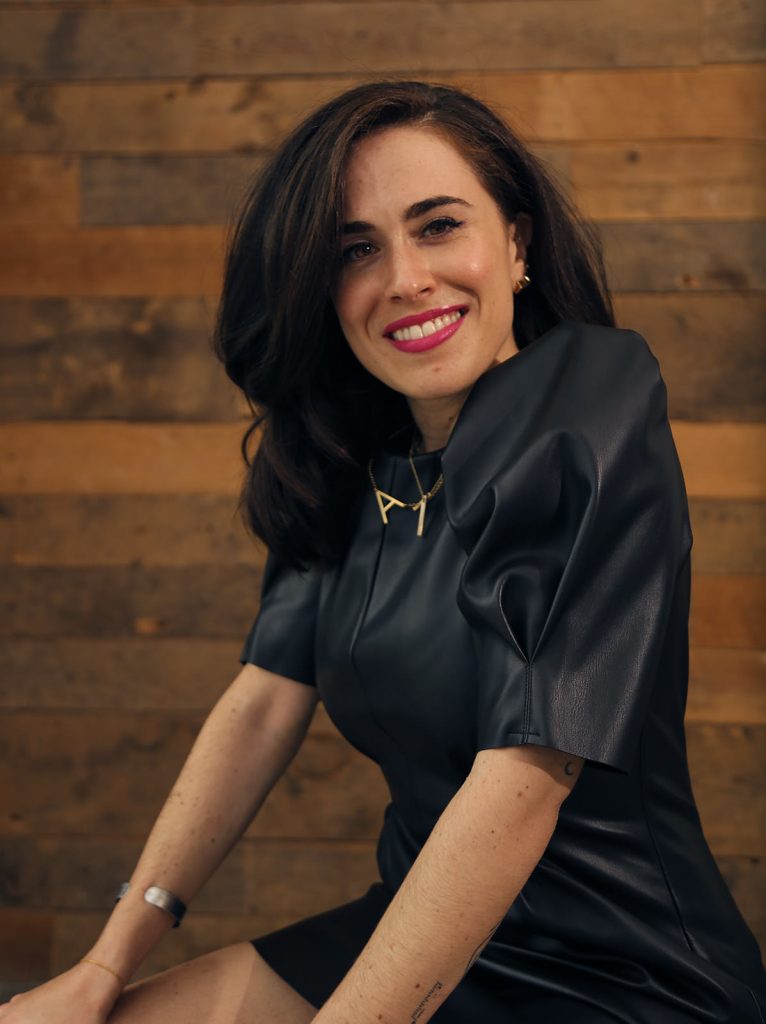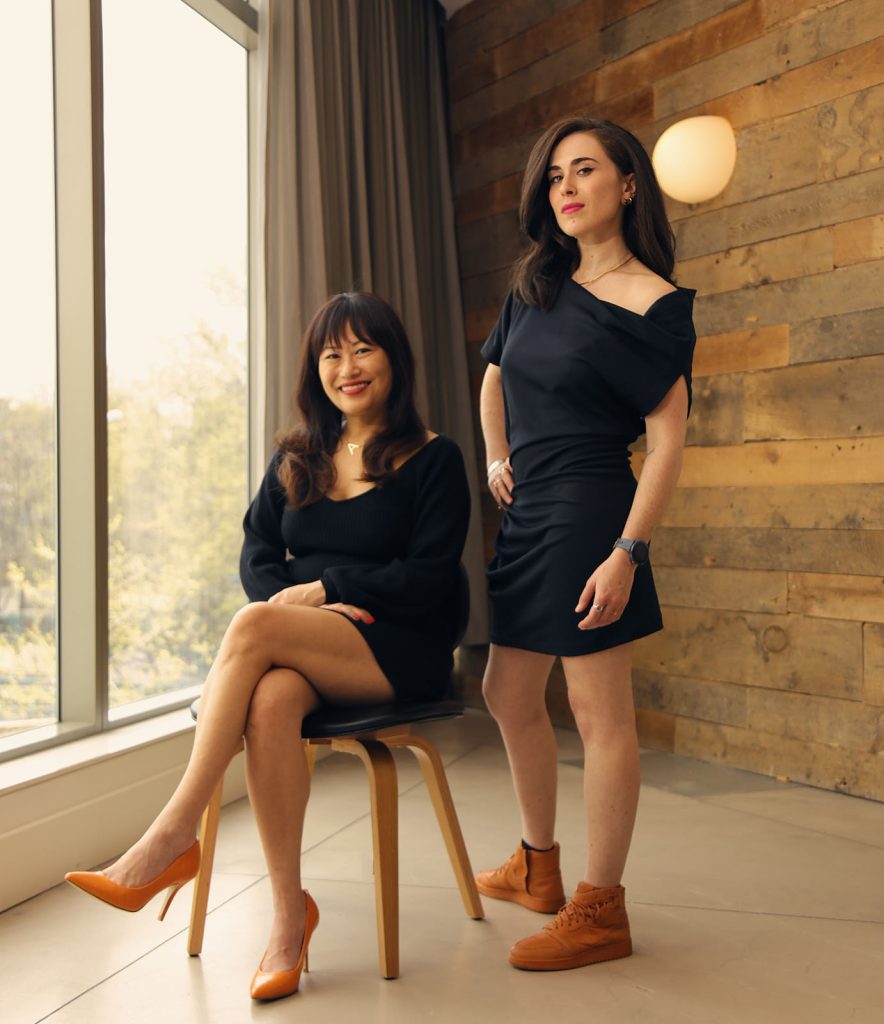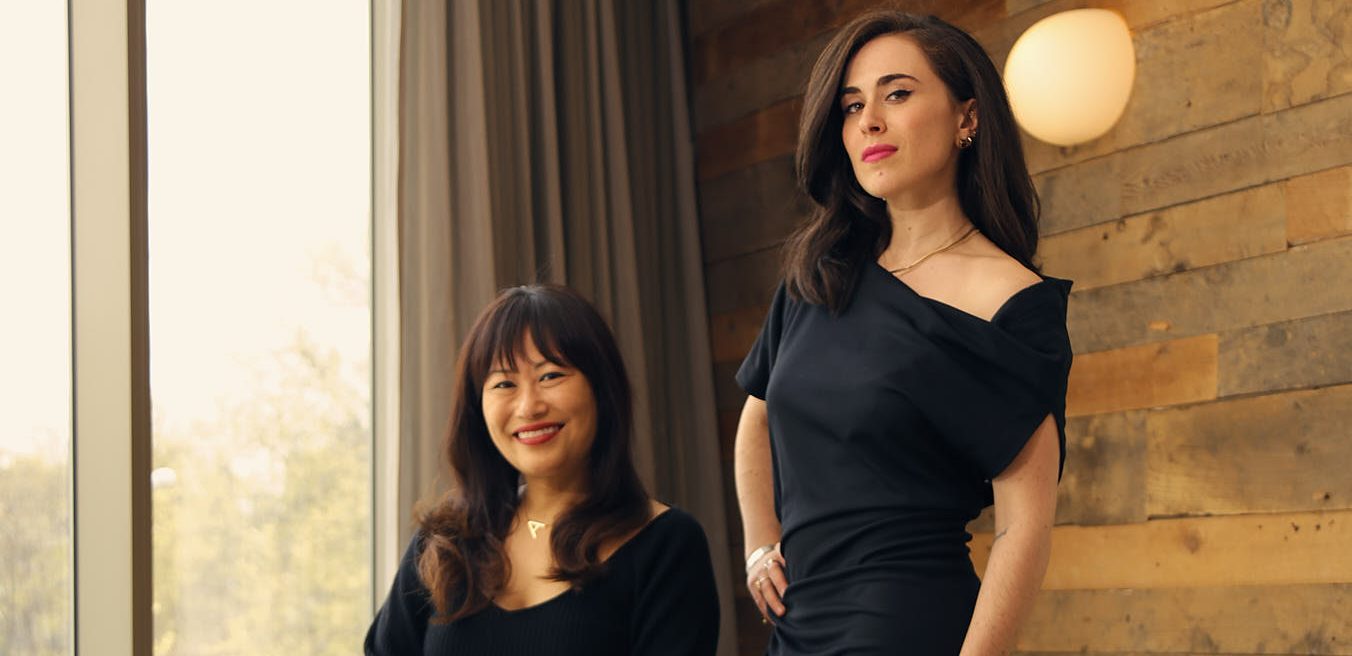Alison Greenberg is the CEO and Co-founder of “Ruth Health,” an innovative perinatal telehealth hub and comprehensive care platform built for women by women. “Ruth Health”is revolutionizing women’s healthcare for prenatal, perinatal, and postnatal care by empowering women with the proper care and access to support the birthing experience. Alison leveragesher experience in both health and technology to make it easier for prenatal and postpartum patients to get the medical oversight they need, while normalizing the taboo symptoms that often accompany pregnancy.
Alison is a Yale graduate who worked as a strategist and consultant with popular brands and agencies. She is also the co-inventor of the Dioptra, a patent pending gynecological and obstetrics medical device. Additionally, founded The New York City chapter of “Women in Voice” and is on the New York programming Board of StartOut, a nonprofit that accelerates the growth of the LGBTQ entrepreneurial community to drive its economic empowerment.
Ruth Health recently received $2.4 million seed funding led by Giant Ventures that will help scale the platform’s virtual services. I spoke with Alison regarding Ruth Health and the difference her company is making in people’s lives.
How did you actually get into telehealth? I know Covid and all that stuff, but you are doing something really different. So how did that happen for you?
My co-founder Audrey Wu and I founded this company as a direct result of a previous company we started that was more of a passion project. We spent tireless nights and weekends rethinking a medical device called the speculum. As we looked deeper into the state of women’s health care, we kept spotting gaps in care that made services inaccessible to most people in the US.
We actually met while we were both running our first companies in a field of conversational AI. We were building chatbots and were both accustomed to an industry that utilized the latest technology to streamline processes— particularly communications. Eventually we began feeling like we wanted to make a greater impact in a way that meaningfully contributes to society. We realized we both had a shared passion for Women’s Health. For me, a lot of that actually came from my upbringing as well because my mom is an OBGYN and she’s actually now a Chief Medical Officer.

How did you actually get started with “Ruth Health”? And where did you get the name?
The name actually comes from the notorious RBG (Ruth Bader Ginsburg). On the night of her passing, Audrey and I were texting each other about how this was a disaster for women and mothers nationwide. It was a wakeup call that we now and forever have to be ruthless in our efforts. That’s why we decided to dedicate the name of our company in her memory. When we set out to solve the existing gaps in care, we focused on pregnancy because that’s where we felt we could make the biggest difference. It’s the highest volume of care needed in a woman’s life and we launched into telehealth because we realized it was the fastest way to deliver care to the highest number of people. We began initially with pelvic training and recovery.
I know a lot of women of course want the father of the baby to be involved. Are they involved in this or no?
They absolutely can be. We think a lot about the non-birthing partner, whether it’s your partner, husband, girlfriend, mother, etc., and how they can take part in the journey alongside the birth giver. We’ve had a few patients that want this person present for a session. Since we are doing telehealth, patients are receiving one-on-one care in the comfort of their own home and therefore they get to dictate who is there with them. Occasionally, it is a non-birthing partner that wants to be present for lactation support sessions. In other cases, it might even be one of their children. You probably understand, as a mother of three, how it’s a huge opportunity to be able to do pelvic training, recovery or lactation support by telehealth without having to schedule child-care.
In the middle of the night do you ever get calls from women that have gone into labor and have questions?
We aren’t usually their first call in such a case, but we do answer a lot of questions throughout the course of the day when we are in between those one-on-one sessions. A huge goal for us is to be a myth buster. There is a lot of misinformation about pregnancy and we are really passionate about making sure we source evidence-based information. We love to answer frequently asked questions to put these myths to rest. Oftentimes, we are the first conversation that somebody has had with a specialist about their pelvic floor because their sessions with their primary doctor might only last 10 to 15 minutes— and postpartum, you might only get one visit with the doctor after six weeks. So, we take the lead on being that reliable source of information. However, we don’t actually touch the birth itself.
I was just curious because a lot of times you rely on people that you have spoken to throughout your pregnancy. So once the baby’s born do you do postpartum care as well and what does that involve?
All of our services are an indication of what we offer postpartum but two of the services can also be done prenatally. Pelvic training and recovery are great to do prenatally to help strengthen and tone before you give birth. It can be a powerful prevention method for pelvic floor prolapse and other pelvic disorders. You can also do our lactation support sessions prenatally. A lot of women find that it makes sense for them to do it that way because it equips them with knowledge about breast breastfeeding, timing, how supply works, even how their breast pump works— all before the baby comes.
On the postpartum side, we do all three of our services: C-section recovery, pelvic recovery, and lactation support. They are all aimed at providing patients with recovery care. Doctors are not providing these services. There are things that need to be followed up on even six months to a year postpartum. We are helping our patients with all of those questions that arrive later on into postpartum care. We also provide care that is typically not found in the mainstream such as C-section recovery. People have been so excited to learn that this exists because C-sections make up approximately 33% of births in the US each year. There is a lot of maintenance, stabilization, and mobilization that needs to be done after a C-section. We try to be that support for them. Where the doctor’s care ends, we pick it up.

Do you get mostly people that have not had babies yet or do you get repeat clients? People that maybe didn’t know a lot the first time and then discovered you now that things are clear to them because of your service.
It’s been really interesting to see the variety of who comes to us. We will have some exploratory conversations with folks that are not even pregnant and then they end up tapping into us as a resource during pregnancy for postpartum care. But the majority of our patients are postpartum and it’s because of the way postpartum care in America is designed. It’s a somewhat outdated system. With that one, six-week visit, it leaves a lot to be desired if you have questions or if you want to be proactive. On the flip side, we can see them a few days after the birth. We can continue working with them for the long haul. We’ve had patients that come two, three to four years postpartum when their challenges for issues such as their pelvic floor were unidentified. They didn’t know that painful sex and incontinence were not normal snd that those were actually things that couldbe treated with a physical therapy based and Pilates-based approach. It’s the same approach we take ourselves. We do diaphragmatic breathing. It is always really exciting to have those folks come in after exploratory conversations when they realize there’s actually a resource out there that they can really use right away to improve their lives.
This new round of funding that you received, how is that going to help you with your business objectives?
We are so grateful to our investors and angels because the funding is going to supercharge our ability to grow the technology, staff our internal engineering teams, add new providers to the platform and expand our overall reach to give more people access to this care model. On the technology front, one key action item for the use of proceeds is to build out our customs patient portal— which takes a broad survey of the many patient portals, same as the ones you’ve seen from your health insurance company, your physical therapist or any of your primary care providers. That will allow us to really comb out what information a patient needs, what needs to be clarified, and what is unnecessary. We are in the process of building that proprietary patient portal so we can better serve patients and create a seamless experience. This will also provide us with our own data that can further boost our ability to optimize care for the patients. This will help showcase our dedication to transparency by making sure patients have access to their data, to their sessions with their provider, and to the care plan we create— giving them the ability to return to it and practice their exercises in between sessions.
What gaps are you looking to fill in Telehealth?
One major gap that we are filling today is the need for flexibility in perinatal care. We launched our latest version packages as mix and match packages— which means that if you buy a package of four or eight sessions, you can use two of those sessions for pelvic training or one for C Section recovery and another for lactation support. That ability to go to one destination and get access to multiple types of perinatal support is so important to us because there is a lot of verticalized care out there.
The second piece of that we are trying to build is continuous care—we want to be there for patientseven after your appointment is finished. We’re building out a care hub to provide food resources, videos, written content and exercise homework. It helps them follow through on what your pelvic trainer, C-section recovery trainer or your lactation consultant recommended in the session.
How long are the sessions?
They are 30-minute sessions and the patient self-schedules them. Scheduling an appointment is as simple as going to a calendar, picking the time that works for you, and then it pops up on your calendar for an invite just like a meeting.
That’s very easy. What does the future look like for “Ruth Health” in the next year or two?
In the near future, we plan on partnering with payers and getting more embedded in the Healthcare System. Currently, we don’t accept insurance. We are excited about some early conversation with payers just to begin embedding ourselves in the system that patients are already familiar with. And that really does depend on having a care hub subscription model where we can be there for patients 24/7— whether it’s taking our sessions, consuming our content, or being able to call or text a birth worker. Some of what we have in development is simply the ability to not just be a provider, but also a friend and a trusted source. They will be able to rely on the functionality that will come from the new patient portal and some other new products that we’re excited to launch in the coming year.
Is there anything that I didn’t go over that you want to add?
One final thing I want to cover is a concept called ‘Collaborative Care,’ which is an important initiative of ours. For many folks, this is a brand-new kind of care when it comes to pregnancy and postpartum. Most visits with clinicians, whether with a doctor or physical therapist, often feel like patients just show up and get a pre-set plan given to them without context. We want to make the plan with you. That is one thing we are really proud about— all of our providers are trained on the Ruth Care methodology and at the corner of that is collaborative care. This means we ask a lot more questions, then we take the answers for your intake session so we can customize your plan to meet your needs. We also really listen to the patient to ensure we are trauma-informed and LGBTQ+ sensitive. That is something we are proud to be able to give to our patients.

